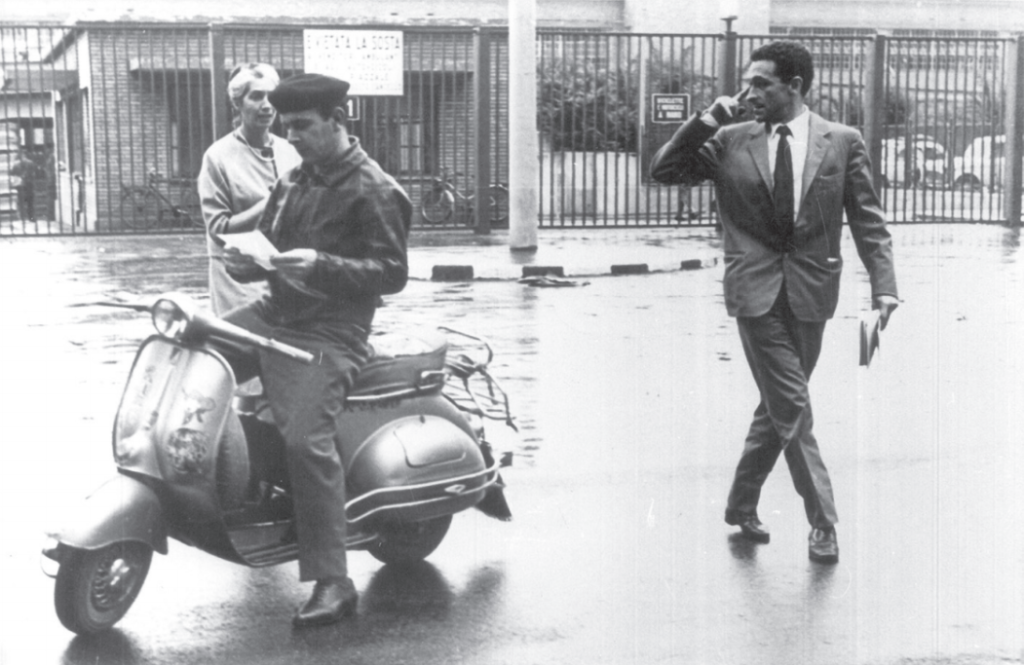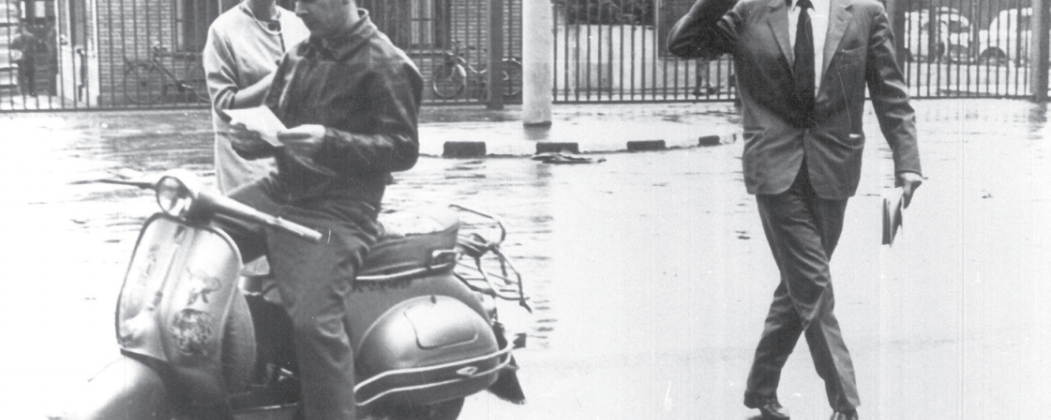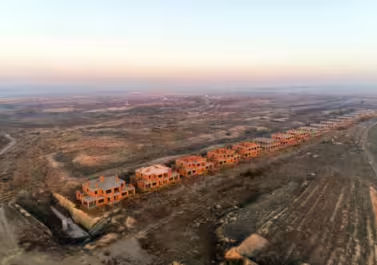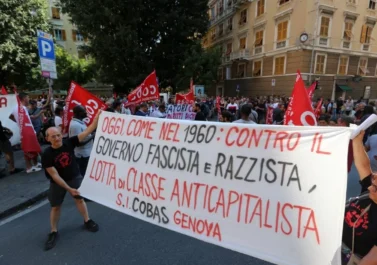
We started by situating Panzieri’s text within its historical context. The meeting noted that Panzieri’s efforts to rediscover a revolutionary praxis anticipated developments later in the 1960s and 70s. That is reflected in Steve Wright’s foreword to “Workers and Capital”, “[Mario] Tronti would later write that … Panzieri deserved to be remembered as someone who had ‘anticipated the 1960s.’“
Panzieri had to attack the ‘objectivism’ of the contemporary left in its various aspects: the notion that a ‘democratic revolution’ was a necessary precondition for the transition to socialism, a notion that led to the integration of parties like the PCI or PSI into ‘democratic reconstruction; the idea that a ‘final crisis’ of capitalism will automatically result in a socialist transformation; and finally, and perhaps at the core of objectivism, the idea that technological development and ‘the advancement of the forces of production’ are neutral processes and that economic planning is intrinsically a step away from capitalism, the essence of which was primarily defined as ‘the anarchy of the market’. Panzieri maintained that “the relations of production are within the productive forces” – meaning, that the form and content of science, technology and the organisation of cooperation within the production process are intrinsically shaped by its exploitative class character.
The mainstream working class parties equated planning with socialist advancement. This happened at a certain historical conjuncture, characterised by the large-scale dimension of the Marshall Plan and its anti-communist nature in Italy, which also prescribed the ‘democratic’ relation between state and trade unions. The close link between state planning and reconstruction of the economy was also visible in the fact that vast parts of industry in Italy were actually state-owned and planning was part and parcel of state departments. Finally, with an increase of US investment, ‘modern management methods’ and corporate planning (e.g an emphasis on information processing and human relations) entered company shop floors.
As an editor of the publisher Einaudi, Panzieri was processing a lot of the most recent publications about US industrial sociology. He could see that, with increasing investments into modern machinery, capital required an active integration of workers into a wider production plan, e.g. in the form of quality management or long-term wage agreements, which allowed longer-term planning and avoided disruption of a costly and complex apparatus. He could also see that, given their uncritical view on planning and technology and the influence of ‘official Marxism’, the left and the trade unions had an open flank and blind spots that would enable the representatives of capital to integrate them into the management of the collective workforce. Panzieri, therefore, went back to Marx and re-emphasised his critical understanding of industrial development as the development also of the political power of capital over the working class. Panzieri confronted the insights of Marx with his contemporary and critical reading of modern industrial sociology – the result of which is the text on the ‘capitalist use of machinery’.
We then looked at Panzieri’s summary of Marx’s understanding of the development of industry and machinery. Panzieri follows Marx and his notion that a phase of large-scale cooperation, still based on an artisanal form of labour in the ‘manufacture’ was transformed by the development of machinery, which appropriated the individual knowledge and skills of the artisan worker and transferred these onto a mechanical apparatus, which, in turn, required the collaboration of ‘associated labour’ in order to be set in motion. As workers enter the production process individually, the increased productivity through cooperation and through ‘applied science’ in the form of machinery appears as the productivity and power of capital. With Marx, Panzieri emphasises the dialectical character of this process: with the advent of machinery, workers cease to be tied to a lifelong profession, which has potentially liberating qualities; at the same time the social and bargaining power that comes with individual skills are taken away and appropriated by capital.
We questioned whether Panzieri, like Marx, overemphasises the control that capital has over and through technology. When it came to machinery and its application, Marx largely relied on documents by the machine manufacturer Ure, who had a commercial interest in portraying machinery as a perfect technological fix. Marxist historians like Lazonick have questioned the historical validity of the idea that the industrial development went in neat phases from artisan production to manufacture to factory and that it was primarily the ‘technological fix’ of the machine that led to a subjugation of workers in the factory system. Instead Lazonick provides ample historical evidence that the ‘manufacturing phase’ was historically insignificant and that it was artisan-family based cottage production that competed with the emerging factory system. Here, it was not only the ‘invention’ of machinery that established the hegemony of the factory, but the fact that it came with a specific social arrangement, which allowed some of the male artisanal workers to keep their leading role as machine minders over ‘their’ women and children who were employed as operatives. This emphasis on the involvement and dependence of capital on certain sections of the workforce undermines the notion of the all-encompassing ‘innovative power’ of capital.
If we elevate this to Panzieri’s lifetime, we might question his view that, “the development of technology takes place wholly within this capitalistic process”, or, “because it is capital, the automatic mechanism is endowed, in the person of the capitalist, with consciousness and a will.” During later inquiries, in particular amongst the emerging group of ‘technicians’, the comrades around Panzieri discovered that both the development of technologies and the execution of ‘production plans’ depend significantly on workers’ improvisation and collaboration. Even today, the field of engineering is contested. Capital would then be appropriating much of workers’ technological prowess and present it as its own. This also sharpens the contradiction between social production and individual appropriation.
It would be our task today to elevate Panzieri’s critique and his dialectical understanding of technological development to the current moment. Both the rejecting and the affirming left positions regarding automation or artificial intelligence, who see the process either as strife for ‘total control’ or a step towards luxury communism, lack insights into both the limits that value production itself puts to automation and the technical limitations of its application. A rereading of Marx would allow to see that there is no incentive for capitalists to invest into robots in times of current wage depressions and a ‘sociological’ inquiry would reveal the technological shortcomings of current automation technology when it comes to labour intensive processes, such as fruit and vegetable harvests or more intricate assembly work. This critical engagement would also entail questioning ‘anti-technology’ views in the environmental movement.
When it comes to Panzieri’s political conclusions, we asked ourselves what he meant by sentences such as: “the subversive strength of the working class, its revolutionary capacity, appears (potentially) strongest precisely at capitalism’s ‘development points’, where the crushing preponderance of constant capital over living labour, together with the rationality embodied in the former, immediately faces the working class with the question of its political enslavement.” On one hand, we could see that Panzieri’s view was confirmed by the fact that workers in the metal-mechanical industry took a leading role in the subsequent cycle of 1969 to 1979. At the same time, there is little evidence that the introduction of new production processes themselves create the condition for a political rupture. Here we reminded ourselves of the previous discussions we had on the council movement, where the political rupture was much more related to crisis and war and the form of councils, at least in Germany. The councils were largely based not on the most advanced sectors, but on a more established workforce in traditional sectors, such as mining.
We also interrogated Panzieri’s notion of rupture. He writes: “The class level expresses itself not as progress, but as rupture; not as ‘revelation’ of the occult rationality inherent in the modern productive process, but as the construction of a radically new rationality counterposed to the rationality practiced by capitalism.” Or: “Consequently, the working-class struggle, any working class struggle, tends to propose a political rupture of the system. And the agent of this rupture is not the conflict between the ‘rational’ demands implicit in the new techniques and the capitalist utilization of them, but the opposition of a working-class collectivity which calls for productive processes to be subordinated to social forces.”
If we take into account Panzieri’s previous text on workers’ control written in 1958, we can see that his understanding of rupture doesn’t equate revolution with some kind of unmediated process. The opposite is true, as Panzieri emphasises that workers have to expand ‘self-management’ or workers’ control from company and sectoral levels to an alternative plan of industrial development, e.g. for the southern regions of Italy. At the same time, he argues that this cannot be a process of co-management, but an antagonistic process. To quote from the ’Thesis on workers’ control’:
“There is continuity in the methods of political struggle before, during, and after the revolutionary leap, and that therefore the institutions of proletarian power must form themselves not only after the revolutionary leap, but in the very course of the whole struggle of the workers’ movement for power. These institutions must arise from the economic sphere, where there is the real source of power, and represent therefore man not only as as citizen but also as producer: and the rights that are determined in these institutions must be political and economic rights at the same time. The real force of the class movement measures itself fromform the share of power and the capacity to exercise a leading function within the structure of production.”
This led us towards querying how Panzieri’s concept of “rupture” related to the the future reconstitution from class society to the free association of producers. We questioned what this ‘developmental plan’ of the working class would look like today, where we see processes of de-industrialisation and relocation of production and where the production system has reached global dimensions and experiences of workers’ self-management on a small scale, such as LIP in France, fail due to market pressures. In a way, the old contradiction between the fact that in capitalism the associated labour of thousands if not millions is needed to keep complex energy, communication and supply-systems running and the fact that the control over this system doesn’t lie in the hands of the workers and profits are appropriated privately is sharpening. There’s also the complexity of sectors like healthcare, service, and education essentially industrialising. The factories were closed and relocated, but their logic extended over the whole of society. The question, though, remains about the working class subject that could express the need for ‘workers’ control’ in Panzieri’s sense. In the early 1960’s the traditional workers’ movement saw those ‘peasant workers’ employed in the new industries as devoid of class consciousness – they were not members of the old parties, they didn’t read Marx, they seemed not interested in ‘politics’. Still, it was those workers who would later on form assemblies and occupied factories. Today we have to question ourselves when we speak of a ‘lack of class consciousness’ within the current class constellation. The ‘new workers’ today carry an abundance of ‘social experiences’ which have not expressed themselves in class terms explicitly, but are dormant. We need an open engagement with the actual class in order to understand what role experiences such as unsuccessful higher education and migration play or what the current rejection of ‘politics’ and the preoccupation with a ‘global system’ mean. Such an engagement and the reconstitution of a class subject is a complex process. We can let Panzieri have the last word, in a letter to Montaldi:
“I am more and more convinced that we have to create focus points totally independent from the party structure and hierarchy, which these class forces can refer to with full trust. These are forces that are conscious of the lies of the official politics of the parties, but do not want to renounce the need for an association. An association which doesn’t become the vehicle of their trust in the ‘authorities’, but of their consciousness and their class solidarity, and thereby becomes a concrete force against the bosses, a revolutionary will. We have to tackle the practical problem; how we can create a connection between the various groups with a revolutionary orientation, both within and outside of the parties, in an organisationally open form – in so far as one has to avoid any appearance of being a small sect, as that is the most terrible error which all small groups of the workers’ left commit”.



